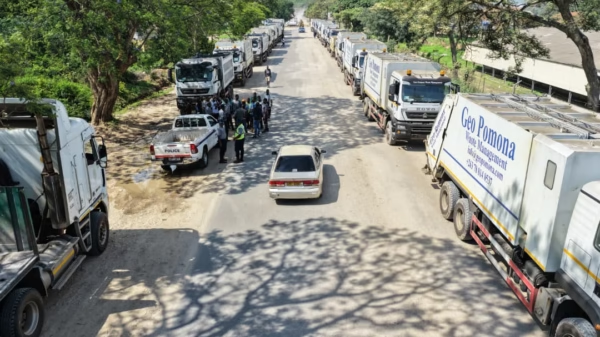Due to a change in flood risk assessments, thousands of property owners may see significant increases in insurance costs.
Despite the fact that Louisiana resident Tommy Becnel has never filed a flood claim against his home, his yearly insurance premium is still expected to increase tenfold, to over $7,000, in the coming years.
He is one of thousands of households who may see significant increases in flood insurance costs as a result of a revision to the Federal Emergency Management Agency’s (Fema) flood risk assessments, which was made in part to account for increasingly intense weather connected to climate change.
Becnel, like many others who are impacted, believes that the higher fees may discourage individuals from insuring their property, endangering their financial security and potentially their houses.
“When I build over there, I will never, ever, ever, pay anybody any insurance,” he said, of a plot of land he plans to develop near his modest home in Belle Chasse, a low-lying suburb near the Mississippi River outside New Orleans.
Fema says the new rating system better reflects the risk facing individual properties, and that changes to its National Flood Insurance Program (NFIP) — established in 1968 — are needed as climate change makes storms more frequent and intense.
The NFIP covers nearly 5-million policyholders and about $1.3-trillion in buildings and contents. It is the main source of residential flood insurance in the US.
But skyrocketing premiums have angered and worried residents across flood-prone states such as Louisiana, which has nearly a half-million NFIP policyholders, among the highest of any state.
“How is that fair, that we’re just going to say that the price of insurance is going to cause you to have to move away?” asked Dwayne Bourgeois, executive director of the North Lafourche Levee District, which works on flood issues south and west of New Orleans.
As climate-change-fuelled disasters worsen, insurance against them is becoming unaffordable or hard to find in growing parts of the US, leaving many families, organisations and governments at increasing financial risk.
Fema says its new flood risk ratings system is intended to include factors beyond a building’s elevation and risk zone, such as its proximity to water, the building type, the frequency of floods and potential rebuilding costs.
All those factors can cut or boost the risk rating for some property owners, compared to their earlier assessments.
Altogether, the changes mean the NFIP is cutting premiums for just more than 1-million existing policyholders at renewal, “of whom many reside in the state of Louisiana,” said David Maurstad, senior executive of the NFIP.
Low-to-moderate-income customers “unjustly have been subsidising high value and high-risk properties for decades,” he said.
Still, the average annual cost of insurance nationally for a single-family home that had transitioned to the new rating system by September 30 is expected to eventually double to about $1,800, according to data released by Fema in April.
The new methodology, known as “Risk Rating 2.0,” kicked in for new policies in October 2021. But since 2022 renewing homeowners have begun receiving adjusted bills as well.
For existing policyholders, yearly cost hikes are capped at 18%, which means many people will not see the full effects of the changes for 5-10 years — and will each year have to decide whether to keep paying an ever-rising bill.
Many are not paying.
Since October 2021, the number of up-to-date NFIP policies has fallen by more than 245,000, or about 5% of the total.
Those forgoing coverage include owners of properties in zones now considered at lower flood risk. That is a problem for a system that depends on large numbers of people paying for protection, not just those most vulnerable.
“You want more people participating — particularly those that are less at risk — and we’re seeing just exactly the opposite,” said Dan Mills, CEO of the Home Builders Association of Greater New Orleans.
Keeping insurance afloat
If the new premiums prompt too many people to end their coverage, they could jeopardise the stability of the NFIP — which is already more than $20bn in debt — and potentially drive up flood insurance prices even more, analysts and legislators say.
Fema officials have said the new ratings system should help improve the NFIP’s finances, but the programme’s senior executive told legislators in April it will not be able to pay back its current hefty debt without help.
Cancelling the debt would provide a “solid foundation” to shore up the programme, Maurstad testified to a House Financial Services subcommittee.
For some homeowners facing higher insurance bills, however, dropping their policy is not an option.
People in flood hazard areas who in the past have accepted federal disaster assistance are typically required to maintain flood insurance, as are residents in high-risk areas with federally backed mortgages.
In Plaquemines Parish, where Becnel lives, the average cost of insurance for a single-family home that had transitioned to the new system by September 30 is expected to eventually increase from $842 to about $5,400, according to Fema.
“Everybody’s in the exact same boat,” said Bill Bubrig, a local insurance agent who handles NFIP policies.
As he drove his red pickup truck through the area, he pointed out homes hit by eye-popping price hikes — including a neighbour whose yearly flood insurance bill is projected to jump from $671 to $8,409.
Some homeowners who have taken action to prepare for future floods are nonetheless getting hit with higher rates.
In Mandeville, about a 40-minute drive north of New Orleans, Leonard and Rebecca Rohrbough elevated their home’s ground floor to about 2.7m after Hurricane Isaac in 2012 brought water to their original doorstep.
The work cost about $230,000 — but their annual NFIP insurance costs are still set to increase from about $600 to more than $4,600.
“After you spend a quarter of a million dollars to elevate to all the required Fema standards and then to meet (local) standards on top of that — it’s (a) real kick in the gut,” Rebecca Rohrbough said.
Other residents, whose homes lie within levee systems designed to reduce their flood threat, say they are also seeing big hikes in insurance costs.
One problem is that certain sections of levee are not recognised by Fema — and parts of levees that no longer exist sometimes remain on federal maps, distorting the ratings, said St Charles Parish president Matthew Jewell, whose parish is west of New Orleans.
“I’d love for some of the people who made this model … to come stand on this levee — or come stand on a section of my levee that is not in their model — and tell me to my face this doesn’t exist,” he said.
Led by Jewell, St Charles filed a lawsuit in federal court against Fema in April to try to obtain information about how the agency modelled its new rates.
Asked about the lawsuit, Fema said it does not comment on active litigation.
Jewell’s voice broke as he pondered the prospect of St Charles’ residents being forced to choose between putting food on the table or buying flood insurance.
“I’m scared about what my community’s going to look like if nothing’s done,” he said. “You’re going to have people whose (insurance costs) are going to be more than their mortgages.”
“These are the people who go to work every day as commercial fishermen and doing … the kind of dirty work that some other areas of the country don’t see but benefit from,” he noted.
Becnel, of Belle Chasse, said he and his family — who have lived in the area at least five generations — have no desire to leave it. But he worries about what his daughter Katie and her young son could face in years to come.
“This is who I’m worried about — her and him,” he said of the pair, who played nearby.

For comments, Feedback and Opinions do get in touch with our editor on WhatsApp: +44 7949 297606.









































